This healthy, easy tuna pâté is flavourful and well-balanced. It's the perfect way to satisfy your snack cravings while still treating your body right.
The savoury tuna pairs perfectly with the smooth crème fraiche, while the fresh herbs and tangy lemon juice add brightness and zest to the pâté.
Homemade tuna pâté is a delicious and nutritious option that's great as a snack or appetiser. It's low in calories and offers a refreshing alternative to the usual butter-filled pâtés.
Enjoy with other nutritious snacks such as celery sticks and carrot sticks or spread it on slices of rye bread for a healthy, filling lunch.
For more dips and sauces, try this easy beetroot hummus, rocket pesto and pistachio pesto.
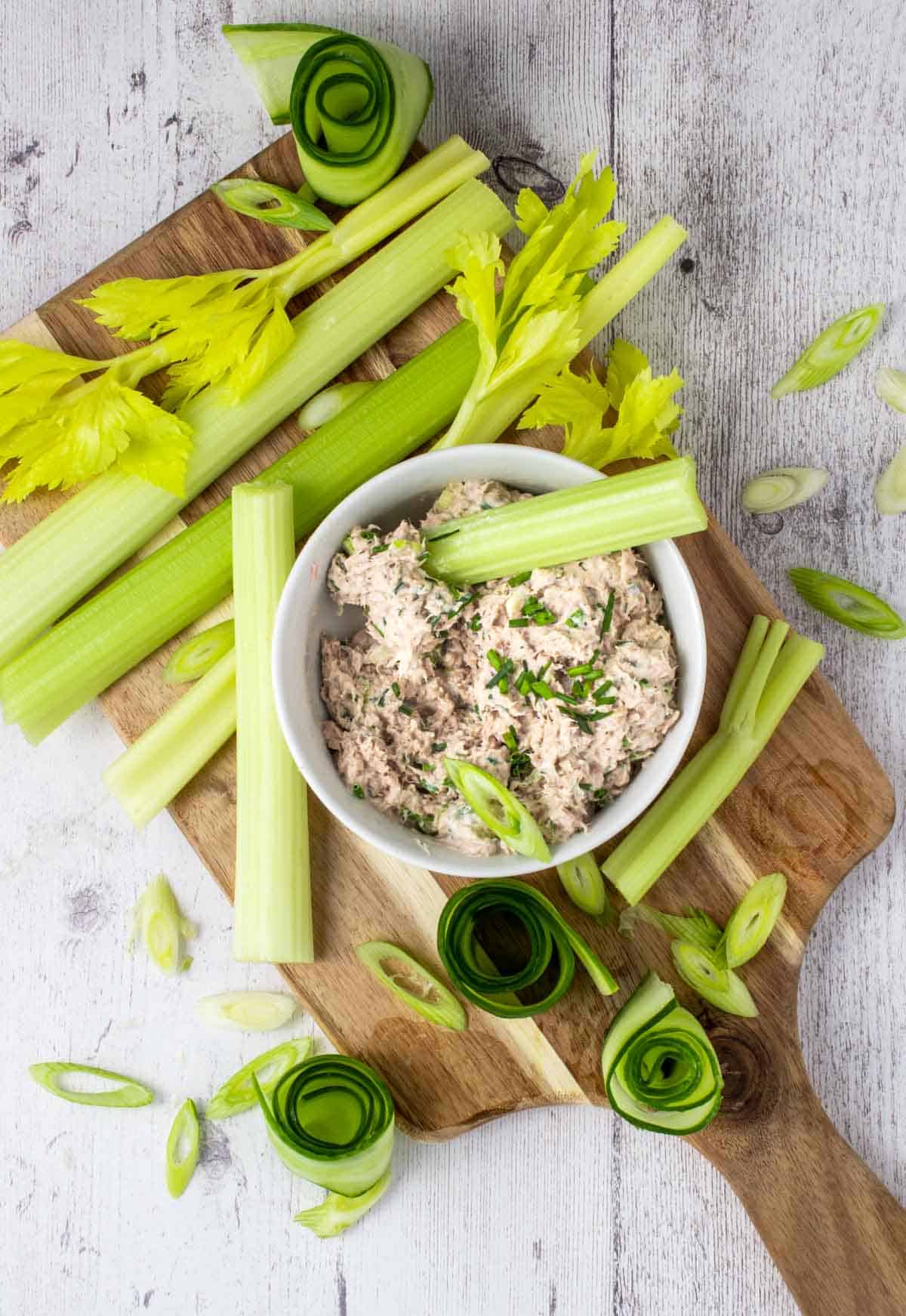
Jump to:
What's to love about this tuna pâté
- Low-calorie content at 90 calories per portion.
- Uses canned tuna which is economical and readily available.
- Gluten-free snack.
- Very quick and easy to make, it takes no more than 5 minutes.
- Can be enjoyed with a variety of accompaniments.
- High protein.
- Good source of vitamin D. A 100g serving of tuna offers around 270 IU of vitamin D. That's over 30% of the daily recommended intake.
- Rich in folic acid.
- Tuna is also rich in vitamin B12, a form of vitamin B responsible for helping the body form new red blood cells.
- No butter.
- No mayonnaise.
- No cream cheese.
- No olive oil.
- No need for a food processor.
Key ingredients and substitutions
**Please see the recipe card at the bottom of this post for the full list of ingredients.
Tuna
To keep things light on the calorie front, opt for tuna packed in spring water or brine.
The more expensive canned tuna tends to have larger, solid chunks, while the cheaper varieties are usually shredded. Since this recipe calls for breaking up the tuna, there's no need to splurge on the pricier solid canned tuna. So go ahead and choose the more affordable option.
If you're using tuna in brine, the tuna might already contain salt, so take care when adding any additional salt.
You can also use cooked, flaked tuna steak.
Crème Fraiche
In this pâté recipe, crème fraiche is used as the binder instead of the usual cream cheese or butter.
However, if you prefer, you can substitute cream cheese for crème fraiche. It will still give the pâté a creamy texture and hold it together. You can make this substitution based on your taste or what ingredients you have available.
Herbs
This recipe uses dill and chives, but you can add any of your favourite herbs.
Good additions would be coriander, basil and fresh parsley. You can also add a pinch of chilli flakes for more of a bite.
Flavourings
Lemon juice, spring onion and garlic are added for extra zing.
Adding a few chopped capers, garlic powder or lemon zest would also provide an extra flavour punch.
How to make tuna pâté
How to prepare the tuna:
- Drain any excess moisture from the canned tuna.
- Place the tuna chunks in a small bowl and break them up as finely as possible with a fork.
Assemble the pâté:
- Add all the ingredients bar the chives and combine.
- Lastly, add the chopped chives and stir through. Test for salt and serve!
Can you use a food processor?
In our opinion, blending the pâté with a processor might be better suited if you replaced the crème fraiche with cream cheese, which will give you a firmer consistency.
For best results, put the finely blended pâté with cream cheese in the fridge for a few hours to firm up.
Variations
- Sweet chilli sauce: You can add a couple of tablespoons of sweet chilli sauce to the tuna pâté. If you're opting to have this as healthy as possible, be mindful of the additional sugar in sweet chilli sauce if using.
- Spicy Kick: Incorporate a dash of hot sauce like Sriracha sauce or a pinch of cayenne pepper for a fiery twist. You can also add diced jalapeños, a sprinkle of paprika and Tabasco sauce.
- Mediterranean twist: Add some chopped sun-dried tomatoes, Kalamata olives and a sprinkle of dried oregano.
- Creamy avocado: Mash in half a ripe avocado for a creamy and rich texture. Adjust the lemon juice accordingly to balance the flavours.
- Mustard: Mix in a teaspoon of Dijon or whole-grain mustard.
- Herbs: Experiment with different herbs such as basil, coriander (cilantro) or tarragon. Swap or combine them with the dill and chives to create your own herbaceous blend.
- Spring onions: Incorporate finely sliced spring onions (green onions).
- Chipotle: Add a touch of smokiness by incorporating chipotle powder or adobo sauce.
- Lemon Herb: Enhance the citrusy notes by adding some freshly grated lemon zest along with the lemon juice.
- Horseradish: Mix in a teaspoon of prepared horseradish for a creamy and mildly spicy kick.
- Nuts: Include some finely chopped toasted almonds or walnuts to add crunch and a subtle nutty flavour.
- Sweet and tangy: For a touch of sweetness, add a teaspoon of honey or maple syrup, along with a squeeze of fresh orange or grapefruit juice.
- Tuna salad: Turn it into a tuna salad by adding tomatoes, cucumber, sliced onions and lettuce.
Serving suggestions
- Scatter over a sprinkling more chives, your choice of herbs and freshly ground black pepper.
Enjoy with...
- Celery sticks.
- Carrot sticks.
- Chunky red pepper slices.
- Crackers.
- As a tuna spread on rye bread fingers.
- Crostini.
- Serve on top of a baked potato.
- Baguette toast.
Storage
This tuna pâté will keep well covered in the fridge for up to 3 days. Store in an airtight container or tightly covered in plastic wrap.
Not suitable for freezing.
FAQ
You can have 2-3 portions of light tuna per week whilst pregnant. However, you should limit your intake of tuna because it contains more mercury than other fish.
It's usually advised not to consume pâtés while pregnant. This is because most pâtés are made from liver which contains high volumes of vitamin A which can be harmful to babies.
This recipe's main ingredient is tuna, so it would be safe to enjoy in moderate quantities.
More recipes to serve alongside tuna pâté
Recipe
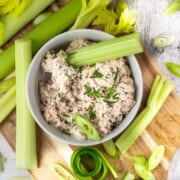
Healthy tuna pâté
Ingredients
- 100 grams tuna - drained
- 3 tablespoons crème fraiche
- 1 teaspoon lemon juice
- 2 tablespoons spring onion - finely chopped
- 1 teaspoon minced garlic
- ½ teaspoon dill - fresh chopped, or dried from a jar
- salt and pepper to taste
- 2 tablespoons chives - finely chopped
Instructions
- Drain any excess moisture from the canned tuna. Place the tuna in a bowl. Break it up as fine as possible with a fork.
- Add the crème fraiche, lemon juice, chopped spring onion, garlic, dill, salt and pepper. Combine well.
- Add the chopped chives and stir through. Spoon into a bowl and serve.
**Nutritional data disclaimer**
Please keep in mind that the nutritional information provided below is calculated by a third party and we cannot guarantee the accuracy. We try our best to give you the most accurate information, but we do not take responsibility for errors that may be present. Also, the nutritional value of the recipe may change depending on the exact brands and products used. We recommend that you consult with a qualified healthcare professional or registered dietitian for personalised advice on your dietary needs.
Nutrition
For food safety advice, including guidance on food allergies


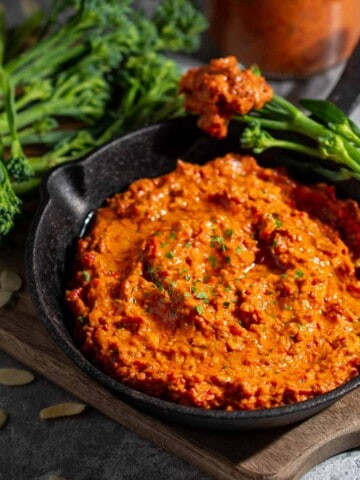
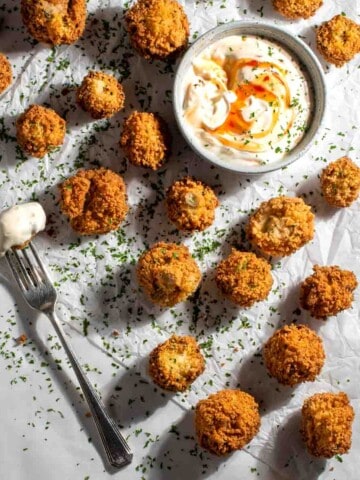
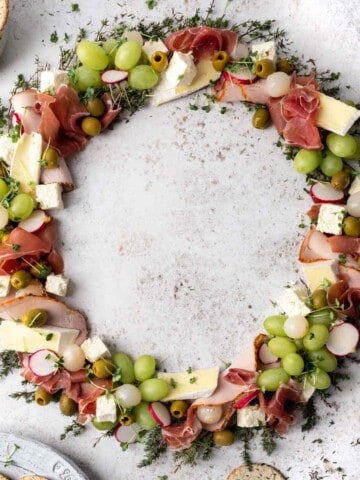
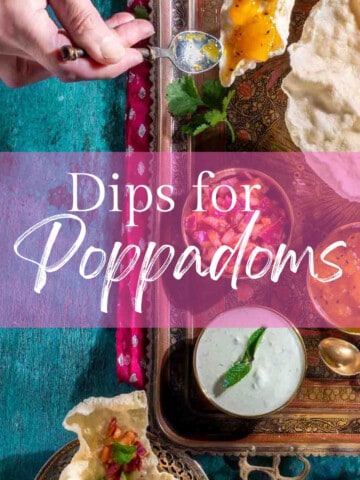
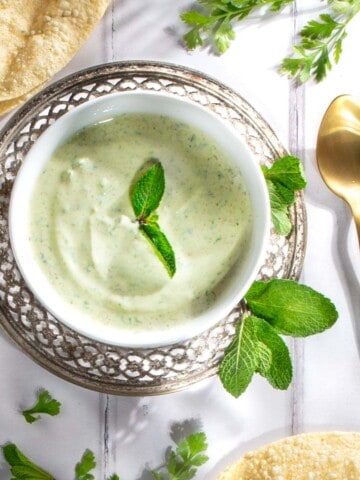
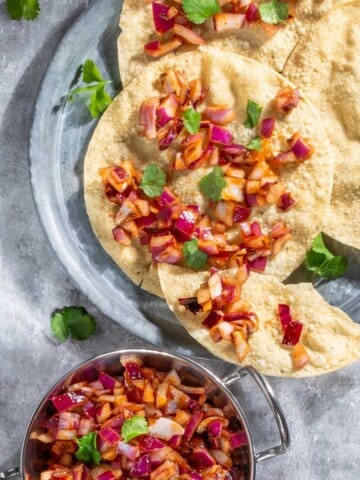
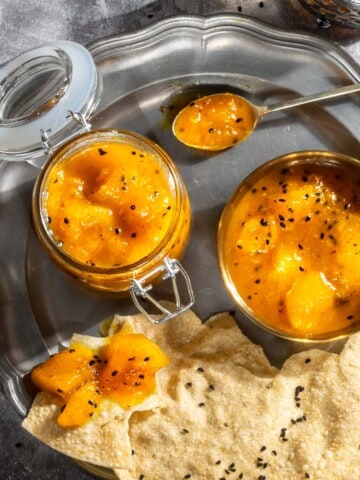
Leave a Reply